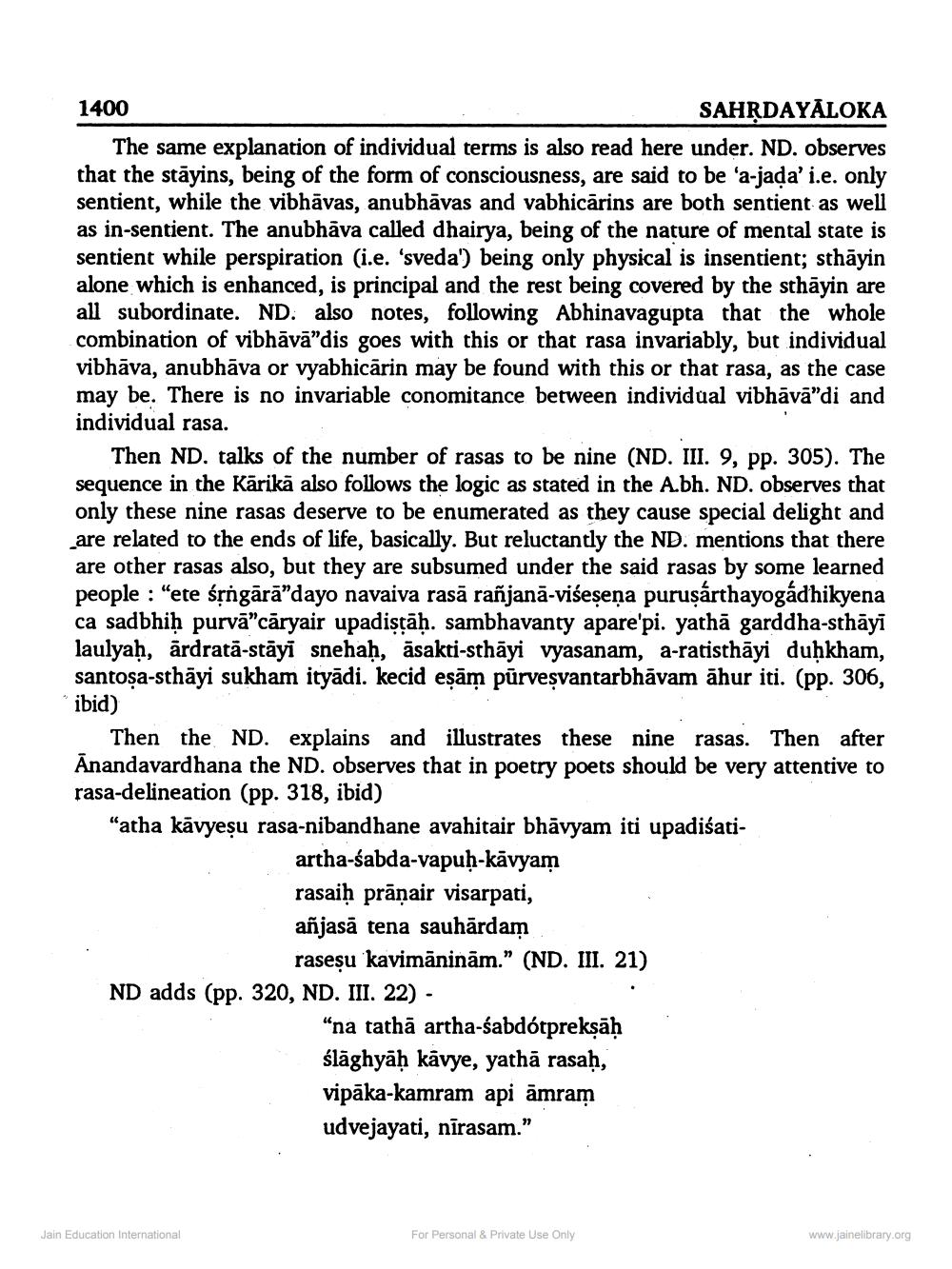________________
1400
SAHRDAYALOKA The same explanation of individual terms is also read here under. ND. observes that the stāyins, being of the form of consciousness, are said to be 'a-jada' i.e. only sentient, while the vibhāvas, anubhāvas and vabhicārins are both sentient as well as in-sentient. The anubhāva called dhairya, being of the nature of mental state is sentient while perspiration (i.e. 'sveda') being only physical is insentient; sthāyin alone which is enhanced, is principal and the rest being covered by the sthāyin are all subordinate. ND. also notes, following Abhinavagupta that the whole combination of vibhāvā"dis goes with this or that rasa invariably, but individual vibhāva, anubhāva or vyabhicārin may be found with this or that rasa, as the case may be. There is no invariable conomitance between individual vibhāvā"di and individual rasa.
Then ND. talks of the number of rasas to be nine (ND. III. 9, pp. 305). The sequence in the Kārikā also follows the logic as stated in the A.bh. ND. observes that only these nine rasas deserve to be enumerated as they cause special delight and are related to the ends of life, basically. But reluctantly the ND. mentions that there are other rasas also, but they are subsumed under the said rasas by some learned people : "ete śộngārā”dayo navaiva rasā rañjanā-višeșeņa puruşárthayogádhikyena ca sadbhiḥ purvā”cāryair upadistāḥ. sambhavanty apare'pi. yathā garddha-sthāyi laulyaḥ, ārdratā-stāyi snehah, āsakti-sthāyi vyasanam, a-ratisthāyi duhkham, santosa-sthāyi sukham ityādi. kecid eşām pūrvesvantarbhāvam āhur iti. (pp. 306, ibid)
Then the ND. explains and illustrates these nine rasas. Then after Anandavardhana the ND. observes that in poetry poets should be very attentive to rasa-delineation (pp. 318, ibid) "atha kāvyeșu rasa-nibandhane avahitair bhāvyam iti upadišati
artha-śabda-vapuḥ-kāvyam rasaiḥ prāņair visarpati, añjasā tena sauhārdam
raseșu 'kavimāninām.” (ND. III. 21) ND adds (pp. 320, ND. III. 22) -
“na tathā artha-śabdótprekşāḥ ślāghyāḥ kávye, yathā rasaḥ, vipāka-kamram api āmram udvejayati, nīrasam."
Jain Education International
For Personal & Private Use Only
www.jainelibrary.org




